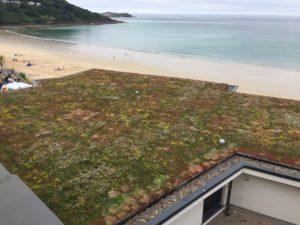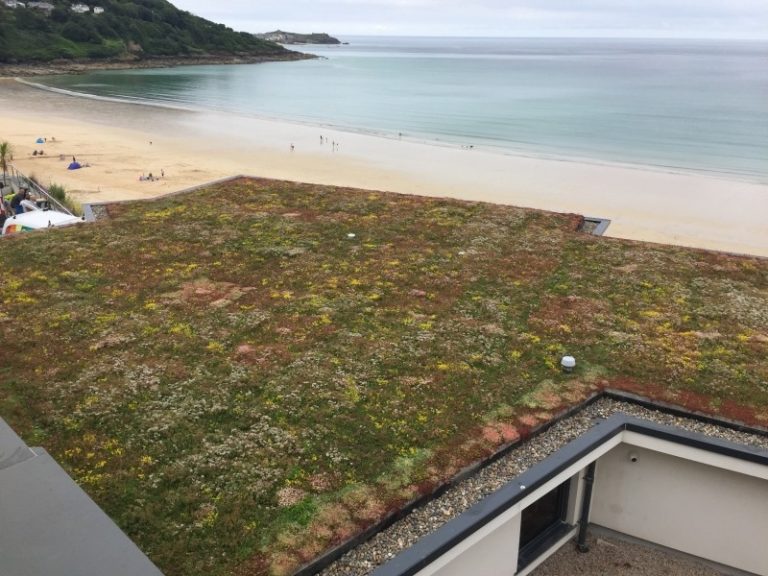Relaying a green roof
Green roofs are growing in popularity and it’s not hard to see why. Not only do they look good but they are also great for the environment. In cities across the world green roofs are being credited for helping to reduce problems caused by catastrophic rain run-off; retaining and releasing water more slowly than would be the case for some other types of roofing. Not only that, green roofs help to improve bio-diversity, acting as havens for insects with important consequences through the food chain.
And that’s before you consider the cooling and insulating effects of green roofs not to mention the fact that they look good as well. So it is hardly surprising that green roofs are proving increasingly popular, and not simply in cities either. After all, when you live or work in one of the UK’s greenest counties, why wouldn’t you add to the beauty of the landscape with a green roof.
So what is a green roof? Green roofs can also be called eco-roofs, biodiverse roofs or living roofs. In its simplest form a green roof is one which has been planted with some form of vegetation. Planting can be simple or complex depending on the structure of the building and access to the roof or balcony. So some green roofs may be planted with sedum or grass whilst others may display a full planting scheme with trees, shrubs and other plants.
Naturally when constructing a green roof it is important to ensure that the base layer is of a suitable waterproofing material which will also resist root damage. But the growing medium also has to be carefully selected and installed. As with any garden, if the soil isn’t there or is of the wrong quality then the plants won’t grow.
That was the case for one property in Carbis Bay. Situated on one of Cornwall’s 2017 Blue Flag beaches, Carbis bay has been described as a “safe bathing beach surrounded by subtropical splendour.” Sadly when we first saw it the green roof on this particular property wasn’t contributing much to the surrounding beauty. Planted with sedum, there just wasn’t enough growing medium for the vegetation to survive.
The remedy was simple. By taking up the dying plants, refurbishing the growing medium and re-planting, the house soon had a flourishing green roof, helping it to play its part in the subtropical splendour of the surrounding area.
The pictures shown illustrate the roof after re-planting and one month later as the sedum becomes re-established.


